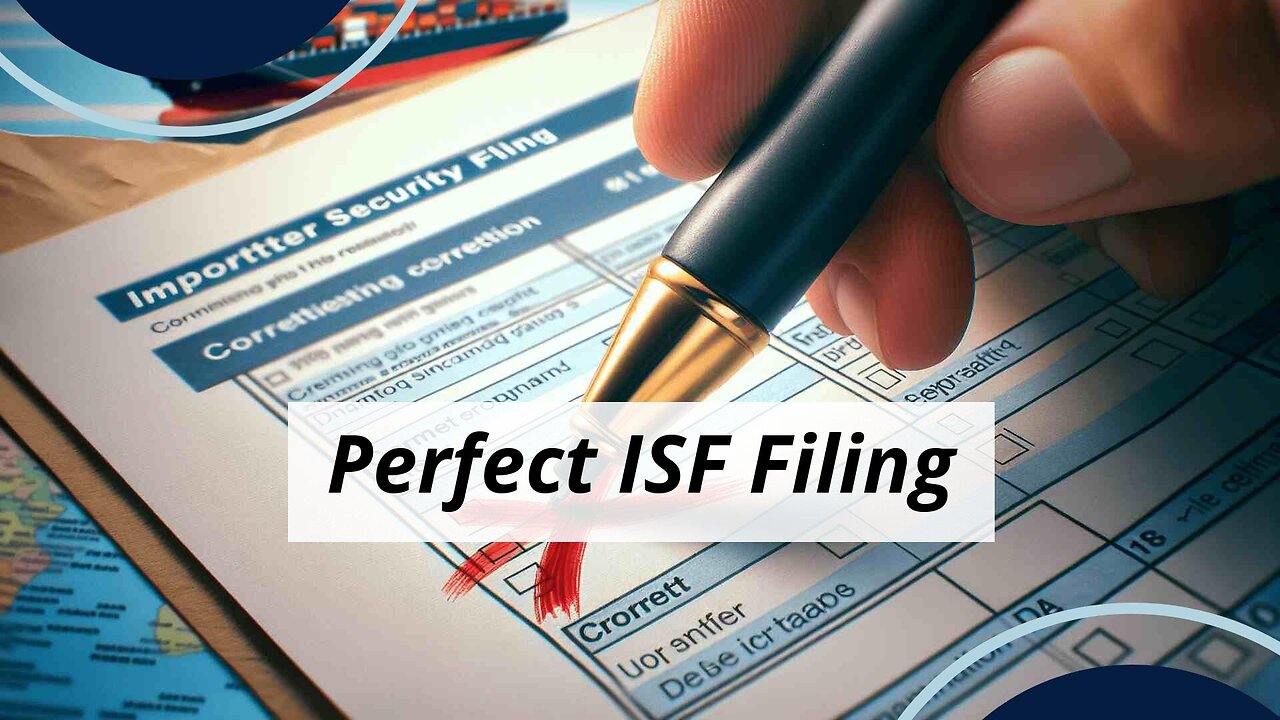Premium Only Content

Mastering ISF: 5 Best Practices for Error-Free Data Submission!
License To Import // 323-578-6432 // file@licensetoimport.com // www.licensetoimport.com
In this video, the customs brokerage firm discusses the best practices for error-free data submission in Importer Security Filing (ISF). ISF is a requirement implemented by the US Customs and Border Protection (CBP) that necessitates importers to provide specific information about their shipments prior to arrival in the United States. The video emphasizes the importance of accurate and timely data submission for streamlining the import process and avoiding penalties. The best practices covered include ensuring accurate data entry, verifying Harmonized System (HS) codes, staying updated with regulations, maintaining effective communication, and utilizing technology and automation tools. By following these practices, importers can minimize errors, enhance accuracy, and improve overall efficiency in the customs clearance process.
#usimportbond #isfcustomsbroker #uscustomsclearing #isfentry
Video Disclaimer Here: This video is solely for education and is not endorsed by any US government agency.
01:00 Ensure Accurate Data Entry: Double-check every piece of information provided, including shipper's name, consignee's address, bill of lading (BOL) number, and container number to avoid delays or penalties.
01:18 Verify Harmonized System (HS) Codes: Accurately classify products with the correct HS codes to prevent misclassification, which can lead to penalties or shipment delays.
01:43 Stay Updated on Regulations: Keep abreast of changing import regulations, restricted goods, trade agreements, and tariff rates to ensure compliance and avoid issues in ISF submissions.
02:00 Maintain Communication and Leverage Technology: Establish effective communication with shipping partners and utilize technology like custom brokerage software and EDI systems to automate data entry, reduce errors, and improve efficiency in ISF submissions.
-
 54:30
54:30
LFA TV
1 day agoThe German Strongman’s Arrival Is Imminent | Trumpet Daily 12.18.24 7PM EST
68K4 -
 2:04:11
2:04:11
Melonie Mac
10 hours agoGo Boom Live Ep 32! Soul Reaver Remastered!
56.1K10 -
 39:11
39:11
Sarah Westall
8 hours agoDigital Slavery and Playing with Fire: Money, Banking, and the Federal Reserve w/ Tom DiLorenzo
65.6K8 -
 1:38:38
1:38:38
2 MIKES LIVE
12 hours ago2 MIKES LIVE #157 ILLEGALS, PROTESTORS AND DRONES!
44.7K1 -
 1:01:03
1:01:03
LFA TV
1 day agoTHE LATEST SPENDING BILL IS AN ABOMINATION! | UNGOVERNED 12.18.24 5pm EST
46.1K48 -
 1:43:34
1:43:34
Redacted News
11 hours agoBREAKING! WARMONGERS PUSHING TRUMP TO LAUNCH PRE-EMPTIVE WAR WITH IRAN | Redacted News
159K280 -
 1:00:26
1:00:26
Candace Show Podcast
11 hours agoPiers Morgan x Candace Owens | Candace Ep 123
100K269 -
 2:06:51
2:06:51
Darkhorse Podcast
14 hours agoFollow the White Rabbit(s): The 256th Evolutionary Lens with Bret Weinstein and Heather Heying
67.4K31 -
 3:08:08
3:08:08
Scammer Payback
12 hours agoCalling Scammer Live
39.3K3 -
 1:21:25
1:21:25
Mally_Mouse
15 hours agoLet's Yap About It - LIVE!
87K10